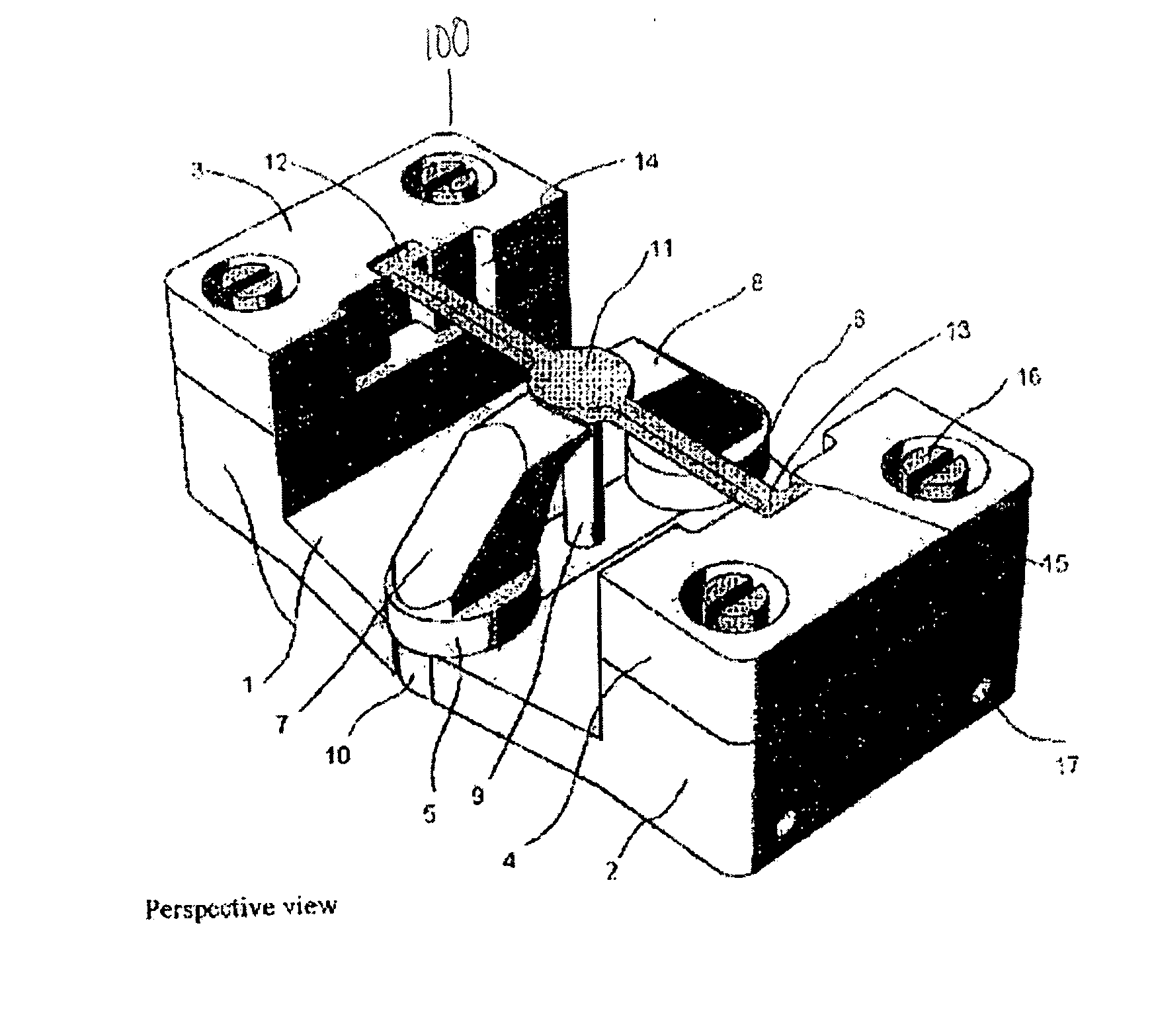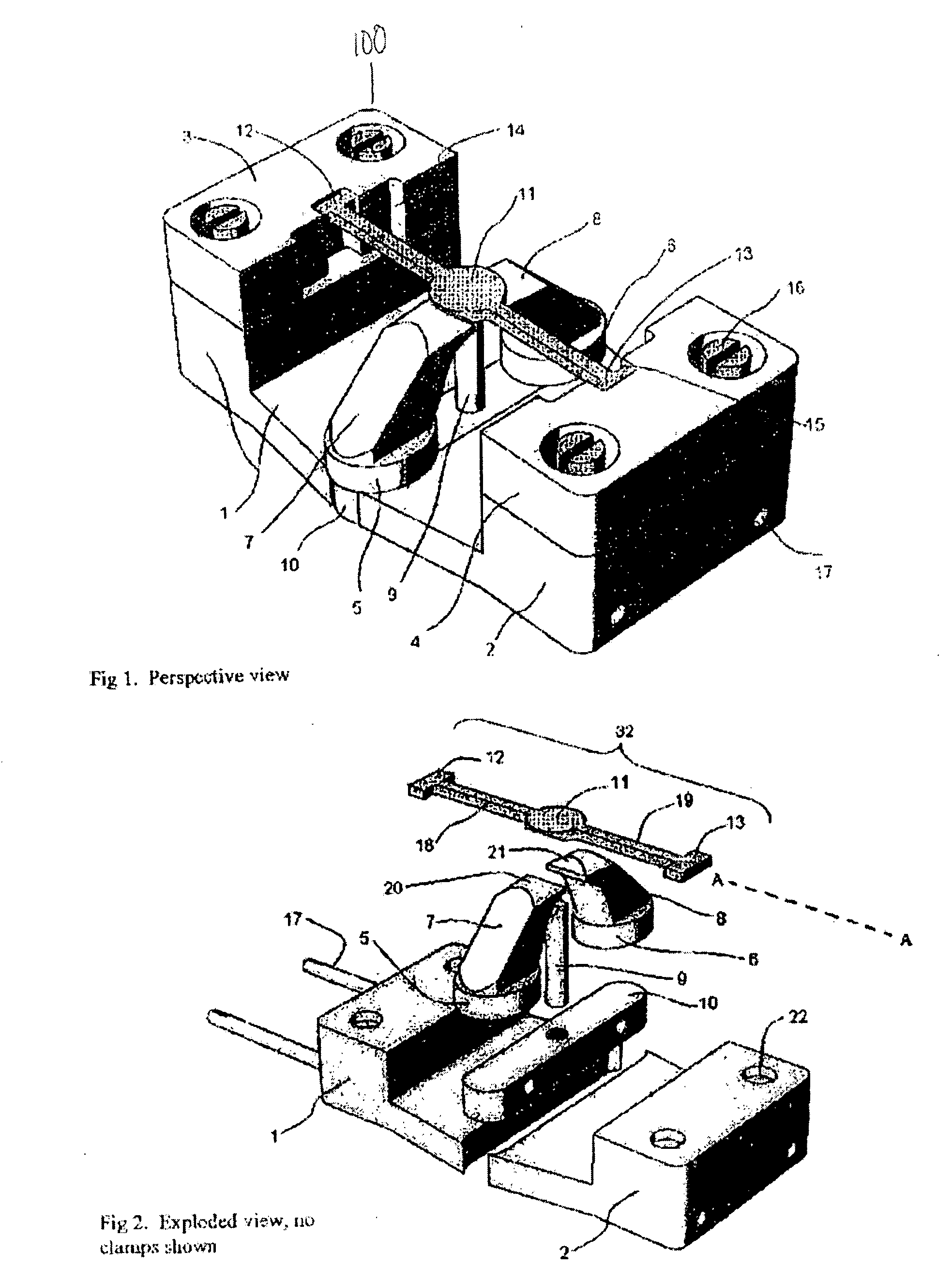Optical scanner
a technology of optical scanners and optical filters, applied in the field of optical scanners, can solve the problems of loss of drive efficiency, difficult to achieve the high resonant frequency sought for many technical applications, and inability to sustain operation at frequencies, etc., and achieve the effect of enhancing flux through the first circui
- Summary
- Abstract
- Description
- Claims
- Application Information
AI Technical Summary
Benefits of technology
Problems solved by technology
Method used
Image
Examples
Embodiment Construction
The Scanner
[0015] The resonant optical scanner of the present invention 100 is illustrated in FIGS. 1-4. Referring to FIGS. 1-2, the scanner includes base plates 1, 2 which are connected together via art-disclosed means (e.g., the bolts 17 shown in FIG. 2) to provide mechanical supports for the scanner 100. Mounted on opposite ends of the base plates 1, 2 are end mounts 3, 4. The end mounts are also connected to the base plates 1, 2 via art-disclosed means (e.g., screws 16 and recesses 22 shown in FIGS. 1-2). Alternatively, the base plates 1, 2 and the end mounts 3, 4 can be integrally formed in one piece or two pieces of materials (i.e., base plate 1 and end mount 3 forming a single piece while base plate 2 and end mount 4 forming another piece).
[0016] Referring to FIG. 2, the scanner 100 includes a flexure 32 that is connected to the end mounts 3, 4. The flexure includes a flexure element 11 that is magnetic and serves as the rotating or oscillating element of the scanner 100. ...
PUM
 Login to View More
Login to View More Abstract
Description
Claims
Application Information
 Login to View More
Login to View More - R&D
- Intellectual Property
- Life Sciences
- Materials
- Tech Scout
- Unparalleled Data Quality
- Higher Quality Content
- 60% Fewer Hallucinations
Browse by: Latest US Patents, China's latest patents, Technical Efficacy Thesaurus, Application Domain, Technology Topic, Popular Technical Reports.
© 2025 PatSnap. All rights reserved.Legal|Privacy policy|Modern Slavery Act Transparency Statement|Sitemap|About US| Contact US: help@patsnap.com



